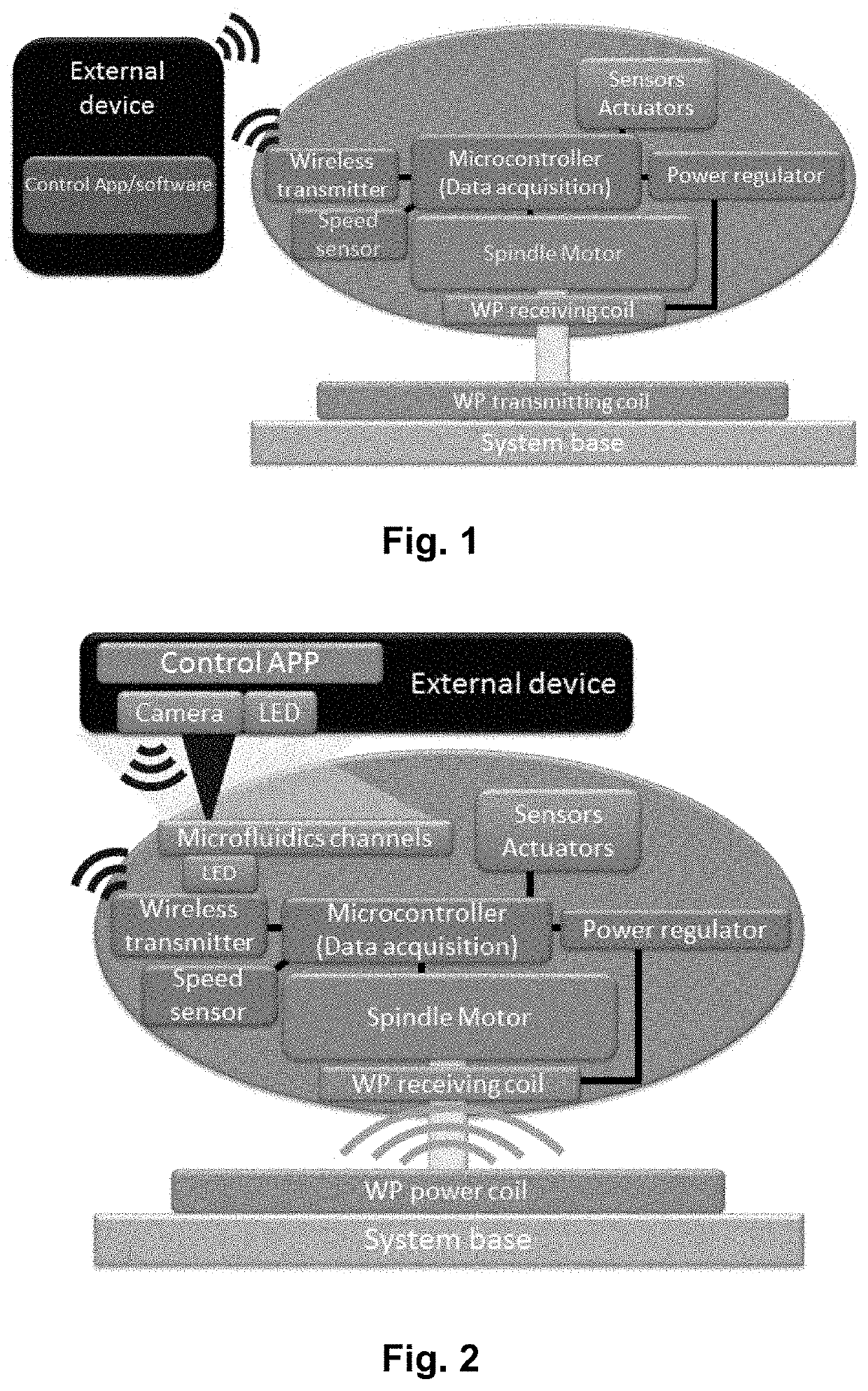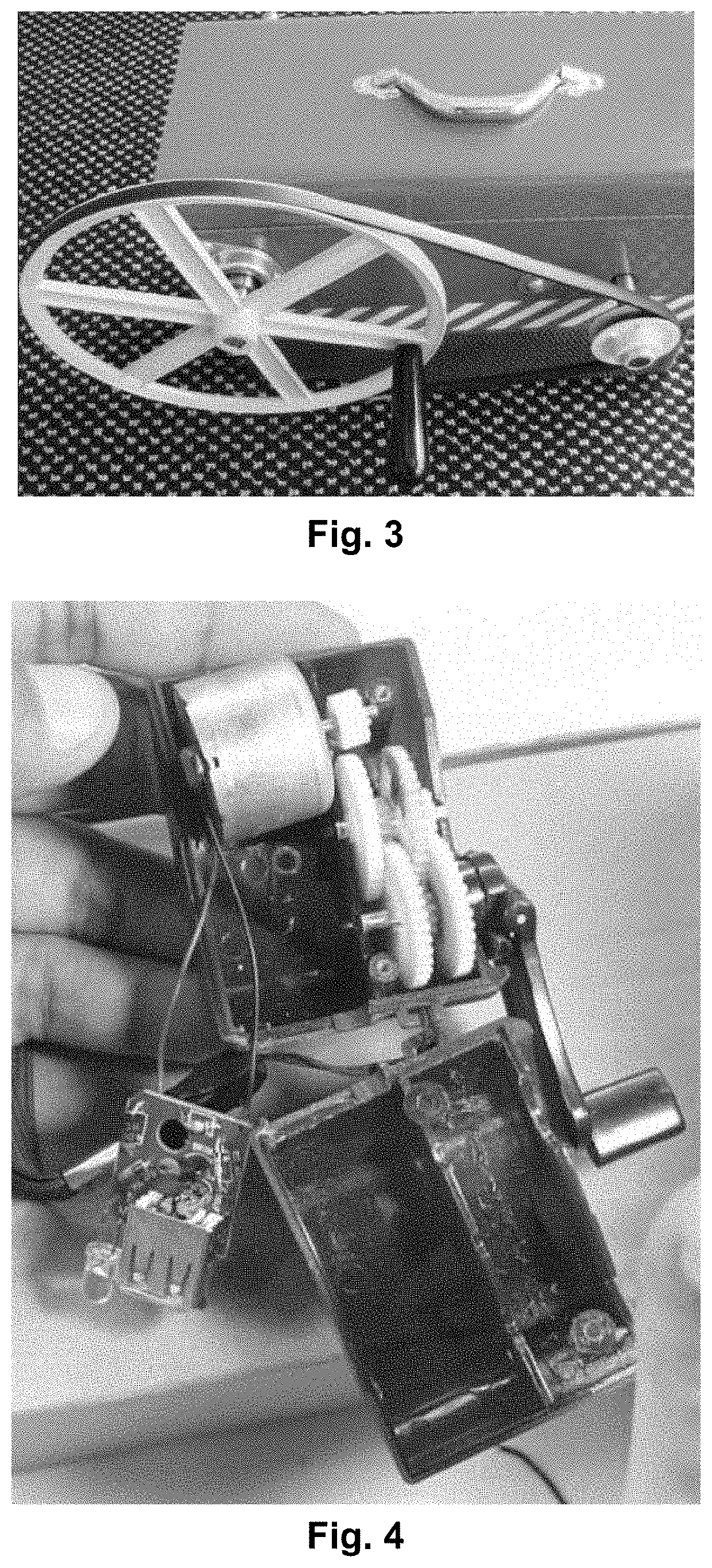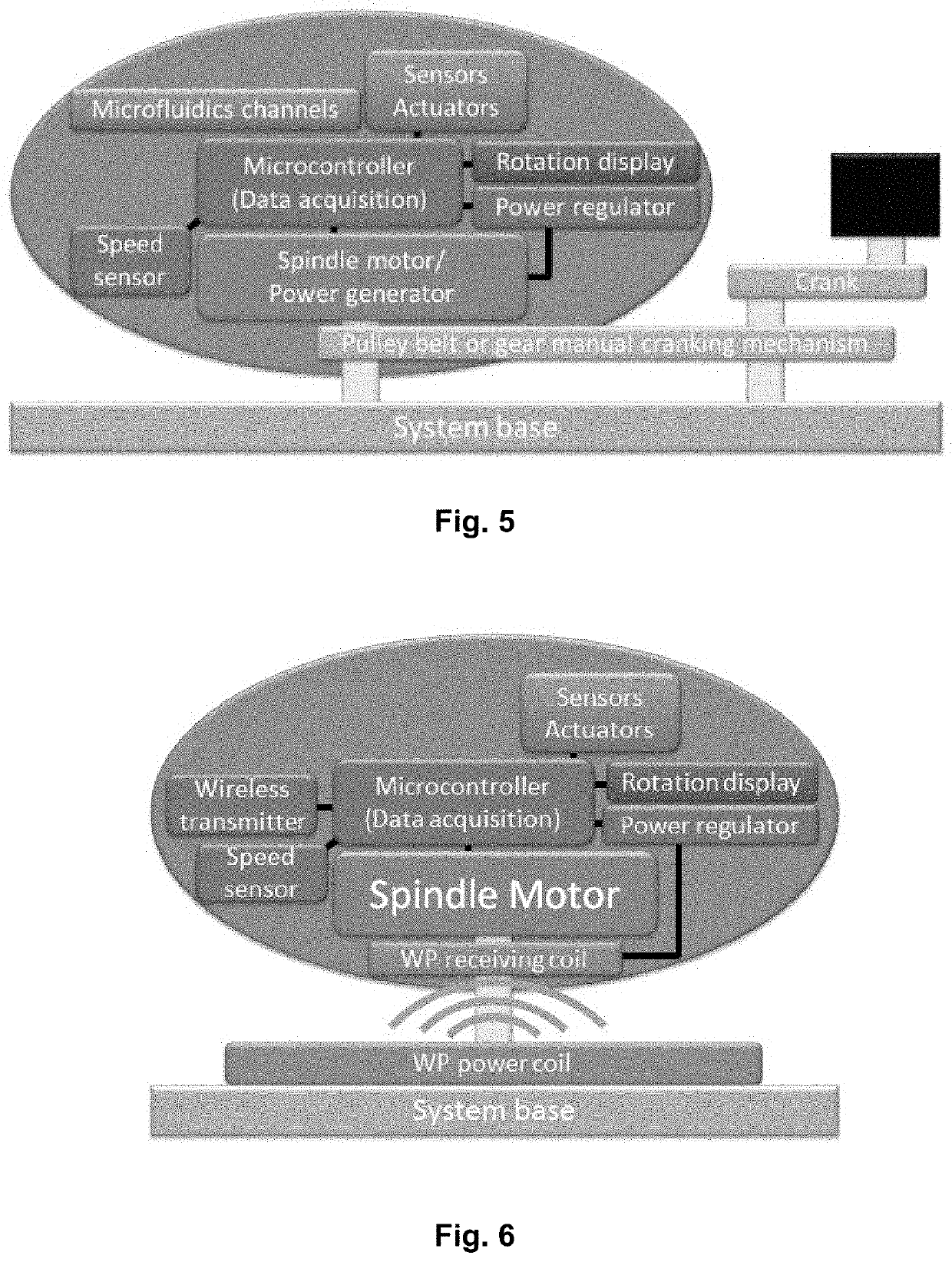Multi function spinning platform
a spinning platform and multi-functional technology, applied in the field of rotating platforms, can solve the problems of difficult control, bulky and difficult to carry, and the difficulty of active real-time sensing and detection while spinning, and achieve good and precise control over the flow rate over tim
- Summary
- Abstract
- Description
- Claims
- Application Information
AI Technical Summary
Benefits of technology
Problems solved by technology
Method used
Image
Examples
examples
[0155]FIG. 7 shows a schematic illustration of an example of the presently disclosed powered lab-on-a-disc (PLoD) device: A miniaturized wireless optical microscope of the PLoD platform, which integrates a 2.4 GHz Wi-Fi transmitter, a complementary metal-oxide-semiconductor (CMOS, 1920×1080 pixels) sensor, with a high numerical aperture optics and a wireless inductive “Qi” energy transmission interface4. The motor is not show in FIG. 7. On the cell culture disc, cells are incubated in a cell culture chamber which is sealed by a lid layer. Cell clusters can be imaged by the CMOS sensor, while the real-time photo and video can be wirelessly displayed and stored on a smartphone or PC through the Wi-Fi transmitter. The Qi interface ensures stable power supply for the functioning of the wireless microscope for the full incubation period.
[0156]The wireless microscope imaging parameters such as resolution (1920×1080 / 1280×720), exposure time, modes switching (color / infrared) and photo / video...
PUM
 Login to View More
Login to View More Abstract
Description
Claims
Application Information
 Login to View More
Login to View More - R&D
- Intellectual Property
- Life Sciences
- Materials
- Tech Scout
- Unparalleled Data Quality
- Higher Quality Content
- 60% Fewer Hallucinations
Browse by: Latest US Patents, China's latest patents, Technical Efficacy Thesaurus, Application Domain, Technology Topic, Popular Technical Reports.
© 2025 PatSnap. All rights reserved.Legal|Privacy policy|Modern Slavery Act Transparency Statement|Sitemap|About US| Contact US: help@patsnap.com



